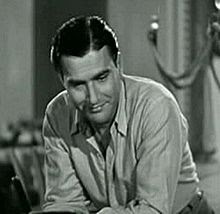One of the orneriest musicians in history, swing-era bandleader and clarinetest Artie Shaw is the subject of a new biography by Tom Nolan. What a character Shaw was — rising to great heights, dropping out of music when his fame and talent were at their highest, provoking no less than THREE of his many ex-wives to write memoirs about him. He spent his last four decades in the west Valley.
 Nolan is an L.A. based culture writer who wrote the definitive biography of a beloved figures for readers of The Misread City — noir novelist Ross Macdonald. His new book, Three Chords For Beauty’s Sake: The Life of Artie Shaw, is just out on Norton. (Review here by music historian Ted Gioia.)
Nolan is an L.A. based culture writer who wrote the definitive biography of a beloved figures for readers of The Misread City — noir novelist Ross Macdonald. His new book, Three Chords For Beauty’s Sake: The Life of Artie Shaw, is just out on Norton. (Review here by music historian Ted Gioia.)
The anecdote Nolan recalls on the first few pages, about Shaw’s attempt to woo a girl he fancied, is so funny and profane I’m tempted to recount it here. But I’ll let readers experience it for themselves.
What follows is my Q+A with Nolan:
